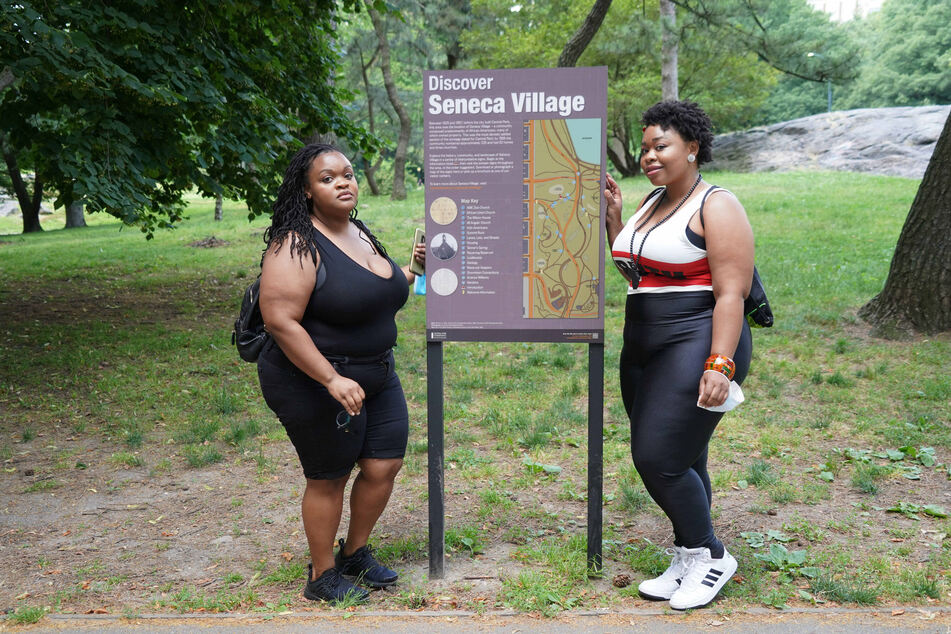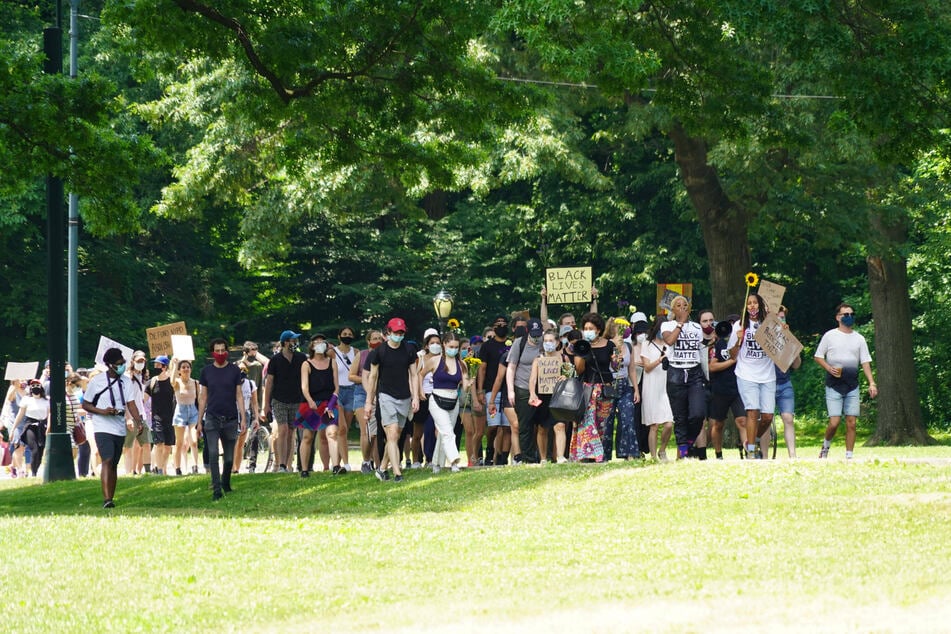New York remembers destroyed Black settlement inside Central Park
New York, New York - Children are playing football on a lawn, people are out walking and holding their faces up to the sun, dogs are sniffing trees, and a musician plays guitar on a bench.

In the (often) harmonious everyday life of New York's Central Park, a few brown signs on the mid-West side of the grounds rarely stand out.
"Discover Seneca Village" is written on them in white letters.
Central Park, which has served as a setting for countless Hollywood film scenes, is one of the most popular attractions in the city, and is visited by more than 40 million people a year.
Largely shaped by the landscape architects Frederick Law Olmsted and Calvert Vaux in 1876, the 2.5-mile long park is an integral part of the cityscape today.
But Seneca Village, the first settlement of free Black people in New York, was forcibly eradicated to make way for the park's creation.
Now, Seneca Village's history is being honored in a brand-new exhibit at the renowned Metropolitan Museum of Art.
New York City Council calls for Seneca Village's demolition

In 1825, property owners John and Elizabeth Whitehead had divided their land – located roughly between 82nd and 89th Streets on the west side of what is now the park – into 200 lots and sold them.
Andrew Williams, a 25-year-old African-American shoe shiner, bought the first three lots for $125. Salesperson Epiphany Davis later bought 12 plots for $578.
Over the years, a small settlement developed – consisting mainly of Black people who were either born free or successfully fought for their freedom, as well as some Irish and German immigrants.
By 1850, the settlement already consisted of about 50 houses, three churches, graveyards, and a school.
Seneca Village was one of the few Black settlements at the time which allowed residents to live away from the heavily developed parts of southern Manhattan and away from the unhealthy conditions and racism that confronted them there, according to Central Park operators.
But in 1857, the New York City Council decided to demolish Seneca Village and have Central Park built.
Today, many New Yorkers aren't aware of the park's past, as the education system often neglects to teach students about such histories.
A few years ago, the park administration began to draw attention to the village's former existence with signs.
Now, it is being enshrined directly opposite its former location, on the other side of Central Park in the Met.
"What might have been, had Seneca Village been allowed to thrive into the present and beyond?" ask curators at the Met museum in their exhibition, Before Yesterday We Could Fly.
The exhibit opened November 5 and is ongoing.
A one-room show in the Met

The display consists of only one room, but it is permanent – and plays with an established exhibition concept of the Metropolitan Museum, the so-called Period Rooms.
These are special rooms in the permanent exhibitions that are supposed to show visitors life in different times and places – like 18th-century France and ancient Rome – with furniture, wallpaper, and art.
Until now, the rooms have almost exclusively celebrated the lives and works of white historical figures.
Now, for the first time, the Met has an Afrofuturistic Period Room, designed by production designer Hannah Beachler, who was involved in Beyoncé's music film project Lemonade and won an Oscar for her work on the film Black Panther.
"This project is important to me because it is a necessary conversation with time, loss, community, and hope," Beachler said.
The room offers an "important opportunity to start new dialogues and illuminate stories that are yet to be told within our walls," Austrian museum director Max Hollein added.
In the colorfully wallpapered space, a small house is suggested and filled with artworks and objects such as bowls and combs. It is inspired by objects from the real Seneca Village found in 2011 during excavations at Columbia University. A video installation runs alongside.
The Met museum is located on the West side of Fifth Avenue at East 82nd Street. Entry to the special exhibit is free with museum admission.
Cover photo: IMAGO/ZUMA Wire

